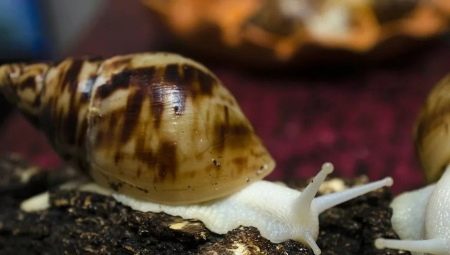Achatina of the albino reticulate differs from its relatives in its milky-white body and brownish-coffee shell color and is one of the favorite species of snail owners. The land animal is friendly in nature, in addition, it is unpretentious in content.
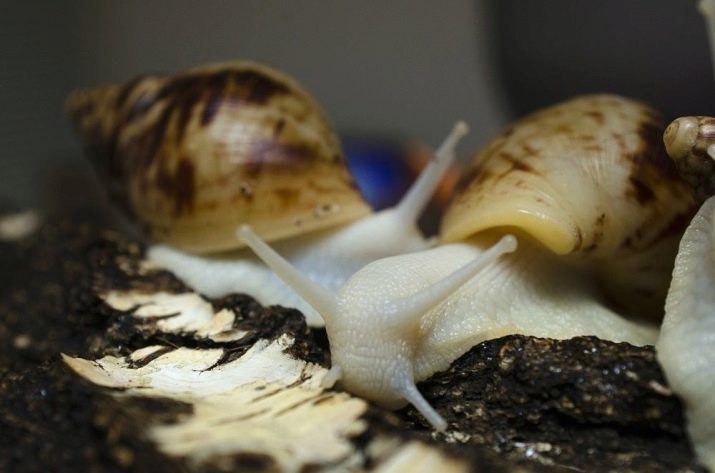
Description
The snail of the albino subspecies is the albino, similar to other mollusks of the Achatina family, not counting the white head and body.
Its distinctive external features:
- conical shell with 8 curls in adults;
- pointed apex, as a rule, light yellow;
- the color of the shell is delicate coffee with a dark brown pattern in the form of stripes and spots;
- columella is light or colorless;
- as they grow older, the Achatina leg turns yellow, and the ninth curl appears on the shell, however, this is characteristic of all reticules.
The eyes of the animal are also white, with transparent pupils, which gives the impression that they do not exist at all.
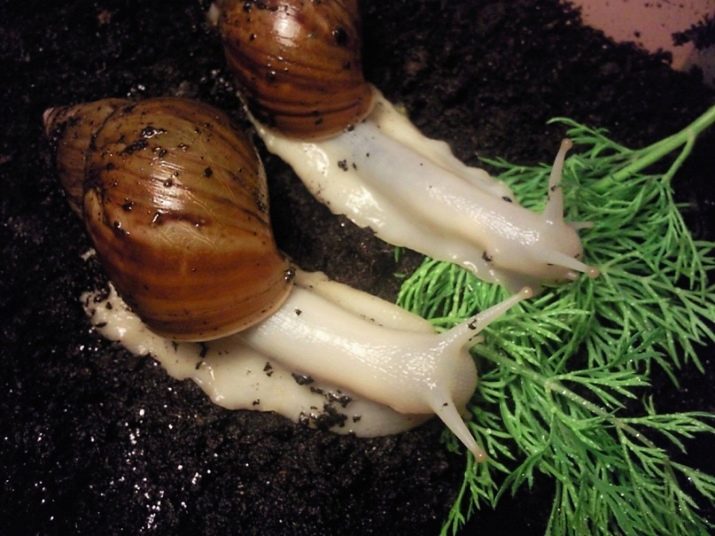
The features of albinos are:
- slow mollusk growth;
- small size of the shell compared with the dimensions of other large snails - 15 cm;
- albino do not hibernate, so they can be combined with other varieties;
- low sensitivity of the shell, so you can pick up the animal in your arms without any problems.
Despite the fact that gastropods are practically always silent, it is believed that they cannot cast their voices, but with danger or severe stress, Achatina can squeak - and quite loudly. This albino is no exception.
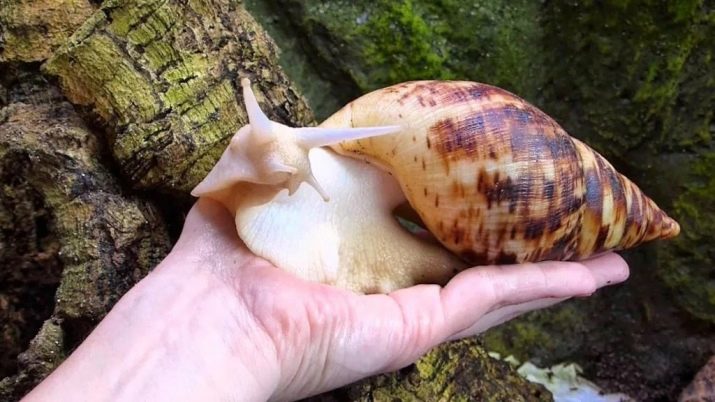
Subtleties of content
For a comfortable stay, Achatina albino needs a spacious horizontal terrarium, for one individual - at least 15 liters.It is undesirable to install solid decorative elements in this dwelling, since during the growth of the snail it is extremely vulnerable, they can seriously injure themselves and die, falling even from an insignificant height.
Some owners prefer to use special syntepon or foam rubber mats for their petscoated with non-woven. This helps to simplify snail care, eliminates parasites and ensures frequency in the aquarium. But still it is recommended to supplement them with leaf litter or moss.
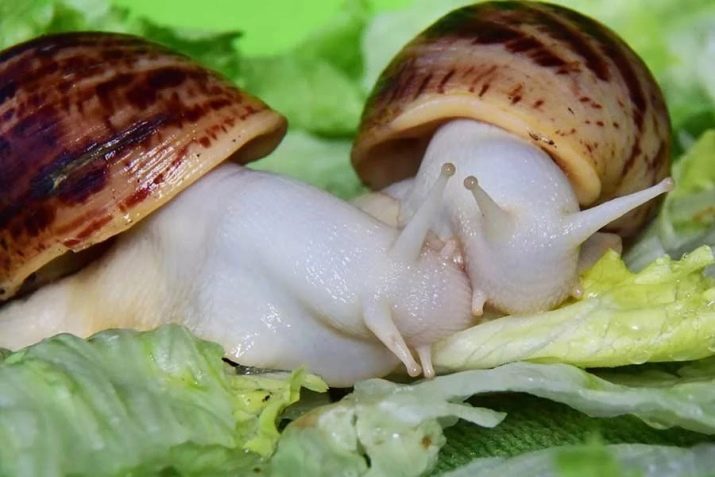
To protect young snails, peat with low acidity, moss, fallen leaves, wood shavings or coconut shavings must be placed at the bottom of the tank. Moss is also laid out along the walls. The substrate layer should be approximately 10-12 cm. The temperature at which snails grow and develop well is 24–28 degrees. This is not surprising, because Africa is their homeland.
It is also worth considering wetting the air. For growing reticules, parameters of 65–80% are optimal; for adult snails, lower values are provided - 60–65%.
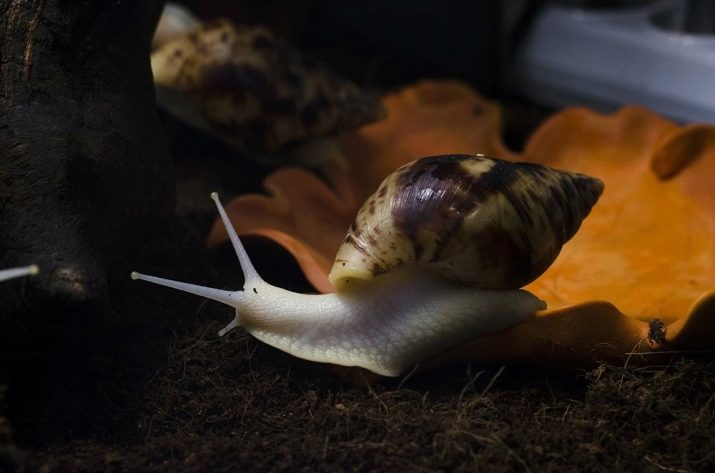
What to feed?
Albinos are unpretentious and illegible in food, so they eat everything that a person offers them. Overeating often leads to swelling or death of the mollusk, so portions of food should be strictly dosed.
Fruits and vegetables that are allowed to give Achatina:
- leaf salad;
- zucchini;
- Tomatoes
- carrot;
- zucchini;
- greens;
- White cabbage;
- spinach;
- pumpkin;
- cucumbers
- from fruits: bananas, sweet apples and peaches.

A mandatory component of any food for Achatina reticulum is calcium. It can be given along with chopped cereals, sprinkling with vegetable and fruit dishes.
In order for the animal to grow faster, from 2 weeks the snail needs vegetable proteinstarting from a month old - animal proteins in the form of 1/3 tsp. daphnia or 1-2 pieces of gammarus crustacean. However, the proteins are not given to the mollusk every day, but 2-3 times a week.

Breeding
By 4–5 months of age, the reticuli grow noticeably, almost reaching their adult size, and by 6–7 months of age they become capable of reproduction. Achatina are hermaphrodites, therefore it is not worth wondering when, after mating, small oval yellow eggs lay both individuals. In the masonry, there can be up to 300 pieces.
Incubation takes about 30 days if this is favored by temperature (26–28 degrees) and high humidity (70–80%). Small mollusks are born from eggs in 15–20 days.
Unfortunately, in the artificially created environment of Achatina, albino reticules live only 2.5 years, while they are free to live 8-10 years.
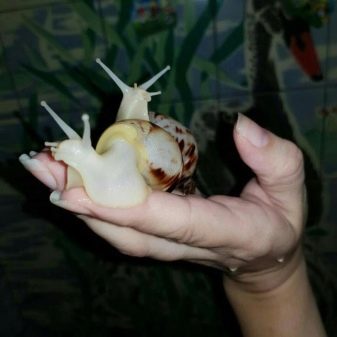
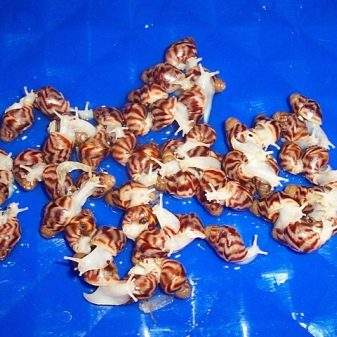
The tiny Achatina that came into the world can be fed with lettuce and cabbage leaves, after sprinkling them with chopped eggshells, as well as vegetables and crushed cereal grains, add lime to food. But after 30 days, grown albino are able to eat and perfectly digest the food that their parents eat.
Young individuals need to be carefully looked after, washed with warm water every day and greased with natural vegetable oil.
It is allowed to pick up already adult animals; earlier it is dangerous to do this because of the fragility of the shell. It is proved that albino snails feel the owner's approach by smell, they like the touch of his hands. For many, this is an indisputable manifestation of warm friendly feelings.
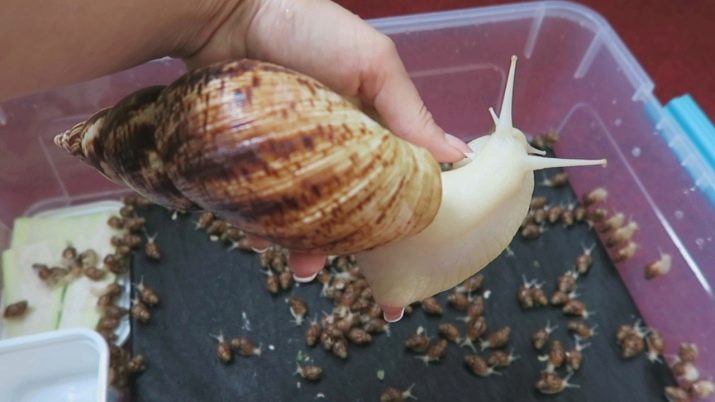
In the next video, you can watch the snails of Achatina albino reticulate.
